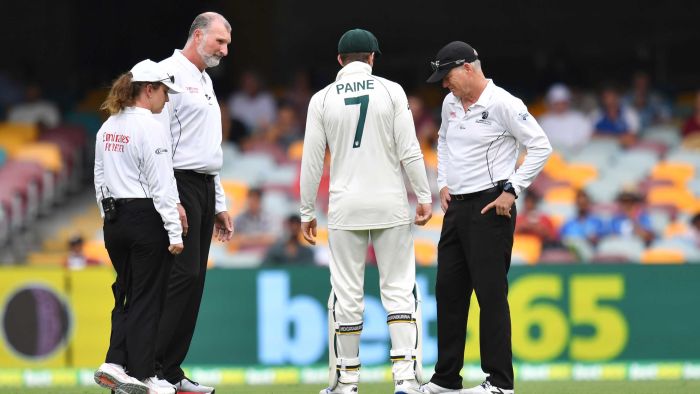On Friday, India’s Shardul Thakur took a wicket with his first delivery of the Brisbane Test. On Saturday, Pat Cummins did it with his second. Nathan Lyon, backed by a roaring crowd in his 100th Test, waited only 17 deliveries to take the 397th of his career.
In the morning session, India took three in the space of 14 deliveries to fight its way back into the contest. Its bowling attack in this match is the least-experienced Australia has faced in a home Test in 140 years: 11 Test wickets between five of them before this game.
With better catching from their colleagues on day one, they might have taken 10 in a day.
Cameron Green, on the other hand, is four Tests and 216 deliveries into his Test bowling career and hasn’t managed a single breakthrough. It is one of the more curious aspects of a series mostly shaped by bowlers, to many of whom Green compares favourably.
The 21-year-old has height, pace, prodigious outswing and great consistency of line and length. But no wickets.
We take it for granted watching a series like this day in, day out, but bowling a cricket ball at 135 kilometres per hour is a tremendous physical feat. Few cricketers in recent memory have made it look so simple as Green, who ambles in and eases through a relaxed, simple delivery stride.
To bowl at a similar speed, the short and dumpy Shardul requires the exertion of a strongman pulling a bus.
Green’s lavish talents and imposing physique come with a predictable vulnerability: stress fractures in his back forced the remodelling of his bowling action and the careful limitation of his output. So, he bowls within himself. Coaches and selectors are wary of the two-point plan of his childhood: bat like Ricky Ponting, bowl like Brett Lee. Only one has the potential to cancel out both.
The closest recent parallel is with Shane Watson, with whom Green’s early Sheffield Shield career bears a close resemblance: teenage sensations taking bags of wickets and batting with maturity beyond their years. Green debuted for Western Australia as a 17-year-old and destroyed Tasmania with seven wickets. As per Watson, when the injuries began, his batting took centre stage.
Green has since learned that patience and an even temperament are the bedrock of an all-rounder’s game. When the wickets don’t come, runs inevitably will, and vice versa. In the morning session on Saturday, he moved gracefully through the gears as he had in the sparkling 84 he made in Sydney.

From the assured 28 he’d made by stumps on day one, he moved to 47 with a pair of dreamy straight drives off the bowling of Thangarasu Natarajan — weight transferred perfectly to the front foot, head dead still and over the ball, full face of the bat making sublime and late contact, ball thudding into the fence a second later.
With the ball, he will eventually have similar moments.
Patience was certainly a virtue for players and fans alike on Saturday at the Gabba, with rain destroying a large chunk of the afternoon session, reducing the sum total of play to the slap-happy end of Australia’s first innings of 369 and the jittery beginning to India’s reply.
Loading
The downtime prompted certain niche analyses that are the only benefit of Test cricket’s endless delays. One: why, despite overwhelming evidence that Mitchell Starc is a better batsman, does Australia persist with Pat Cummins at number eight?
This tactical error is now particularly glaring in a team whose scoring load is carried by too few. It is downright bizarre in a line-up containing a settled rookie number six in Green and an ascendant number seven in Tim Paine, both of whom could accompany clean-hitting Starc through the sort of momentum-shifting partnerships that have been the bane of many touring teams in the last decade.
On Saturday, Cummins departed quickly, another misfire in an unimpressive recent run. Starc’s crisp and undefeated 20 in the aftermath only underlined the dilemma he faces: by the time he comes in, hitting out is basically the only option and he soon runs out of partners: not backed to forge partnerships with the middle-order batsmen, he seems uninterested in applying himself to much more.
For a batsman with 10 Test half-centuries to his name, it seems a waste. And in a Test series that might go down to the wire over the next three days in Brisbane, it is a rare problem with an obvious solution.







